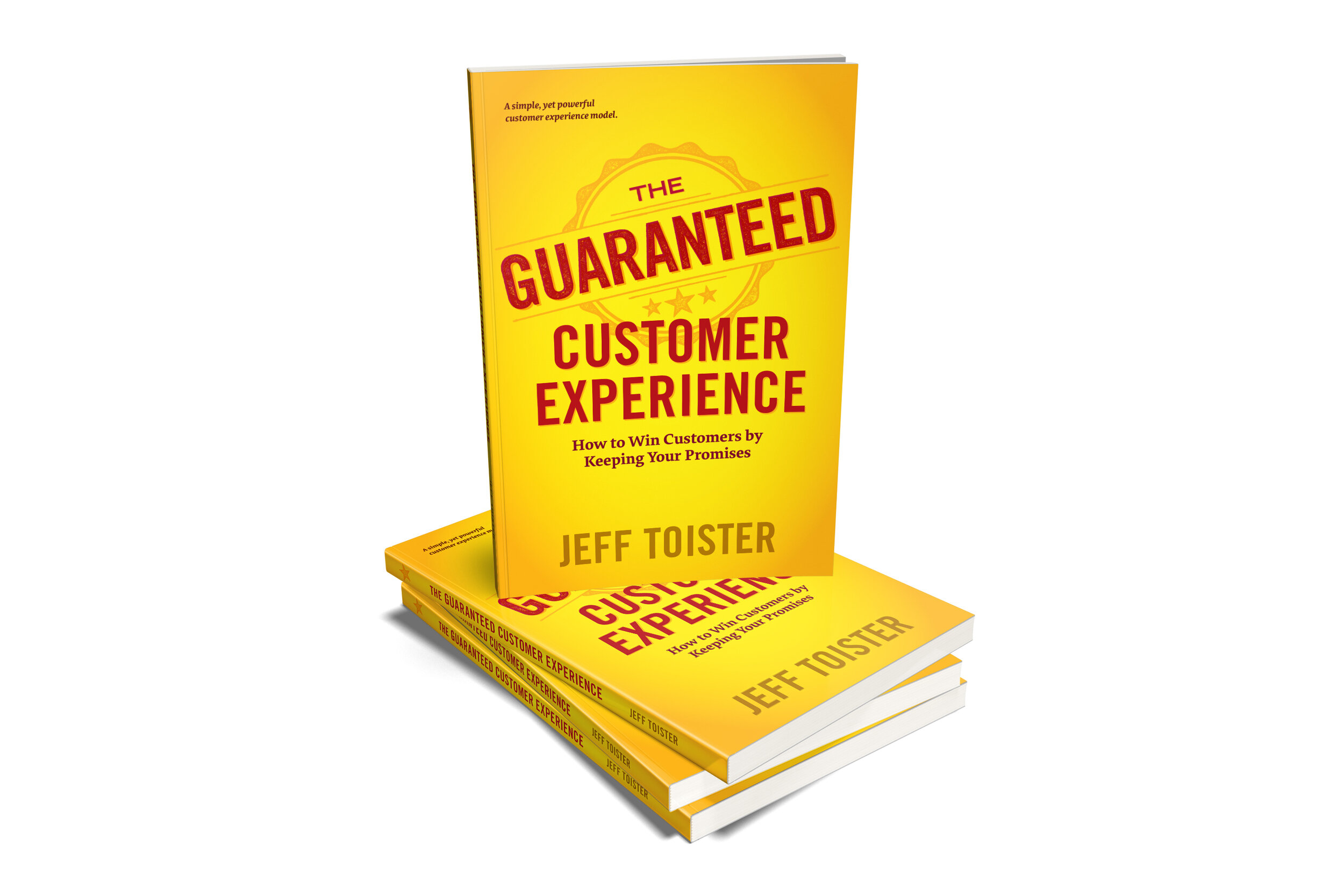Two contact center leaders recently contacted me about the same issue. Their contact center was getting overwhelmed with volume.
Each faced multiple risks and worries.
Long wait times increased complaints.
Irritated customers were at risk of leaving.
Overwhelmed contact center agents were at risk of quitting.
Staffing alone isn't the solution. It's hard to find and train qualified agents fast enough. More immediate actions are needed.
One manager faced the added challenge of getting executive support. It's tough to handle the surge if you don't have the authority to hire more agents or improve efficiency.
I've been there as a contact center manager. It's not fun.
Here is the advice I shared with the two leaders. It's sorted into immediate, short, and long-term actions. Each tactic has proven to be effective.
Immediate Actions
There are a few things that you can do right now to reduce your queues. These actions can make a significant dent in your volume. Some are counterintuitive, but trust me, they work.
#1 Stop showing agents the queue
Most contact centers let agents know how many customers are waiting. The idea is to let agents know when they need to work a little faster or put off taking a break.
What it actually does is generate more contact volume.
Agents spend less time calmling upset customers when they're in a hurry. Unfortunately, upset customers are more judgmental and less open to solutions. This makes calls take longer.
Listening skills are also degraded when we're in a rush. Poor listening means missed opportunities to fully solve problems and prevent future calls.
One client implemented this tactic, and the results were immediate:
#2 Focus agents on first contact resolution (FCR)
Stop showing real-time productivity data to agents, including average handle time, emails per hour, and chats per hour. Ask agents to focus on fully solving each customer's problem and preventing that customer from having to make a second contact.
Repeat contacts drive a lot of volume. One analysis I did showed that a contact center with an 80 percent FCR could get 23 percent of its call volume from repeat calls!
You don't have to create a convoluted FCR measurement. Just ask agents to forget about handle time and instead focus on politely and efficiently serving each customer. Contact center expert, Myra Golden, has some great call control tips that can help.
Now here's the strange thing. Contact centers that focus on FCR don't see an increase in handle time.
#3 Focus agents on one channel at a time
Small contact centers often have agents respond to emails in between phone calls. This causes both calls and emails to take longer, and agents are more likely to make mistakes.
Mistakes create additional contacts.
I've worked with multiple contact centers to run an experiment. Agents were separated into phone and email teams, and each team focused exclusively on that channel. In all cases, productivity and quality both went up.
You can still move agents between channels as needed. Just keep them focused on one channel at a time.
#4 Go into emergency mode
Do whatever you can to clear your queues in the short-term. Customers tend to contact companies multiple times when they are waiting, which creates a multiplier effect for your queue.
Here are a few things you can do:
Give your team extra hours.
Ask for help from other departments if feasible.
Prioritize live channels (phone, chat) over messaging (email, sms).
#5 Proactively update customers
Companies should generally respond to email within one hour. That’s hard to do if you prioritize live channels (see #4 above). When volumes soar, it's a good idea to share multiple messages to let customers know wait times are abnormally long.
This will reduce repeat contacts and avoid some contacts entirely.
For email and web tickets, set an autoresponder to let people know there's an unusually long response time. The message can also give customers additional options, including self-service and calling.
Resetting expectations will likely prevent far more contacts than it will cause.
Here are a few more ideas:
Update your hold message.
Add a banner to the contact or support page on your website.
Post updates to your social media.
You can even create a web page that shows the status of various issues. For instance, my website is powered by Squarespace. Anytime something gets wonky, I first check status.squarespace.com for updates.
#6 Adjust schedules
It’s easy to lose sight of the basics in the heat of the moment. Make sure you've adjusted your schedule to meet demand.
Many small contact centers keep consistent schedules all year. It gives agents some stability, but it can also cause problems over time.
One client would get hammered with calls on Monday morning and then have agents sitting idle on Wednesday afternoon. Updating the schedule allowed the contact center to redistribute staffing levels to eliminate the queue without cutting hours.
Short-term Actions
The immediate actions above can have a dramatic impact on your queue. But sometimes volume surges continue. Here are a few more actions you can take to get ahead.
#7 Find the root cause
There’s a good chance a few specific things are driving a lot of your volume. Perhaps a defective product is frustrating customers, a marketing campaign is going bonkers, or world events are wrecking havoc on your supply chain.
Gather hard data when possible. That turns "we're getting a lot of calls" into "50 percent of our extra call volume is related to this confusing feature on our new product."
Hard data can get other departments to act.
#8 Fix self-service
Customers often try to solve simple problems on their own before contacting customer service. Look for fast fixes to self-service if your contact volume is driven by a lot of simple issues.
One counterintuitive solution is to make it easier for customers to contact a live agent. Many companies try to hide their contact information, but studies show customers feel more confident trying self-service if they know they can quickly contact someone to get help.
Another fix is to make answers easier to find.
For example, Dollar Shave Club found that 40 percent of its customer email volume could have been handled via self-service. It used a feature in its Zendesk customer service software called Answer Bot that made it easier for customers to locate self-help articles.
This small change prevented 5,000 emails per month.
#9 Document the cost
You can get more support from your boss or other departments by connecting high contact volumes and long wait times to financial metrics. Here are just a few things to consider:
Are you losing agents because of high volume?
Are you losing customers because of the volume?
Are your goodwill costs (e.g. extra discounts, etc.) going up?
Are your survey scores being hurt by high volumes?
Are your servicing costs (overtime, outsourcing, etc.) going up?
Customer experience legend, Jeanne Bliss, shares some great advice for showing executives the money in this entertaining interview.
#10 Offer callbacks
Consider offering a callback service, such as Fonolo. These services allow customers to request a callback when an agent is available. You can even configure it so customers can schedule a callback at a later time.
Check out my interview with Fonolo CEO, Shai Berger, who explains how callback services can smooth out your queues.
#11 Reduce perceived wait time
We know that customers tend to get more aggravated the longer they wait, and aggravated customers are harder to serve. That makes contacts take longer.
You can soothe customers by making the wait seem shorter.
For instance, a looping hold message reinforces the feeling that you've been waiting on hold for a long time. You can make the wait seem shorter by changing your hold message to intersperse helpful updates with funny reminders or catchy music.
Here's a list of ways to reduce wait time perception.
#12 Hire temporary agents
Some contact centers can easily separate simple and challenging contacts. Some use a tiered support system. Others find email is easier for beginners because they can spend more time researching the answer, use templates to help craft a response, and have an experienced colleague check their work before sending.
This is a perfect opportunity to hire seasonal or temporary agents. You can quickly train them to focus on a few basic contacts, freeing up the rest of your team to focus on more complicated issues.
Long-term Actions
Contact centers eventually have to adjust to the new normal if high contact volumes persist. Here are a few long-term actions that can help.
#13 Start recruiting now
Hiring takes a long time. It can take several weeks to post a job, screen applicants, interview candidates, and make someone an offer.
Get ahead of the curve by starting your recruiting process now, even if you don't have any openings. Build a roster of interested candidates you can hire immediately once you get the green light to add agents.
#14 Improve new hire training
The average contact center agent takes 12 weeks to fully train. Years ago, I discovered a method to cut that time in half while getting better agent performance.
The secret is using scenario-based training.
Most contact centers train each agent skill independently. So agents learn how to use various software programs, how to interact with customers, product knowledge, and company procedures all as separate modules. But that's not how agents actually use those skills.
With scenario-based training, agents learn the job by following realistic scenarios. Scenarios start simple and get progressively more complicated, which reinforces core skills such as using software systems, customer service, and using the knowledge base to find answers.
The result is much faster training with better skill retention and on-the-job performance.
#15 Outsource some volume
Partnering with an outsourced contact center is one of the best ways to give your customer service team added flexibility. You can handle more volume spikes, ramp up faster, and even wind down programs more quickly.
Two of my favorites are Transparent BPO and Callzilla. Both are finalists for ICMI's 2021 best contact center outsourcer award.
Need More Help?
A huge spike in volume can feel overwhelming, but you don’t have to tackle it alone.
Find someone to help you out or just give you a fresh perspective. Reach out to trusted colleagues, advisors, and mentors. And you can always contact me.

















